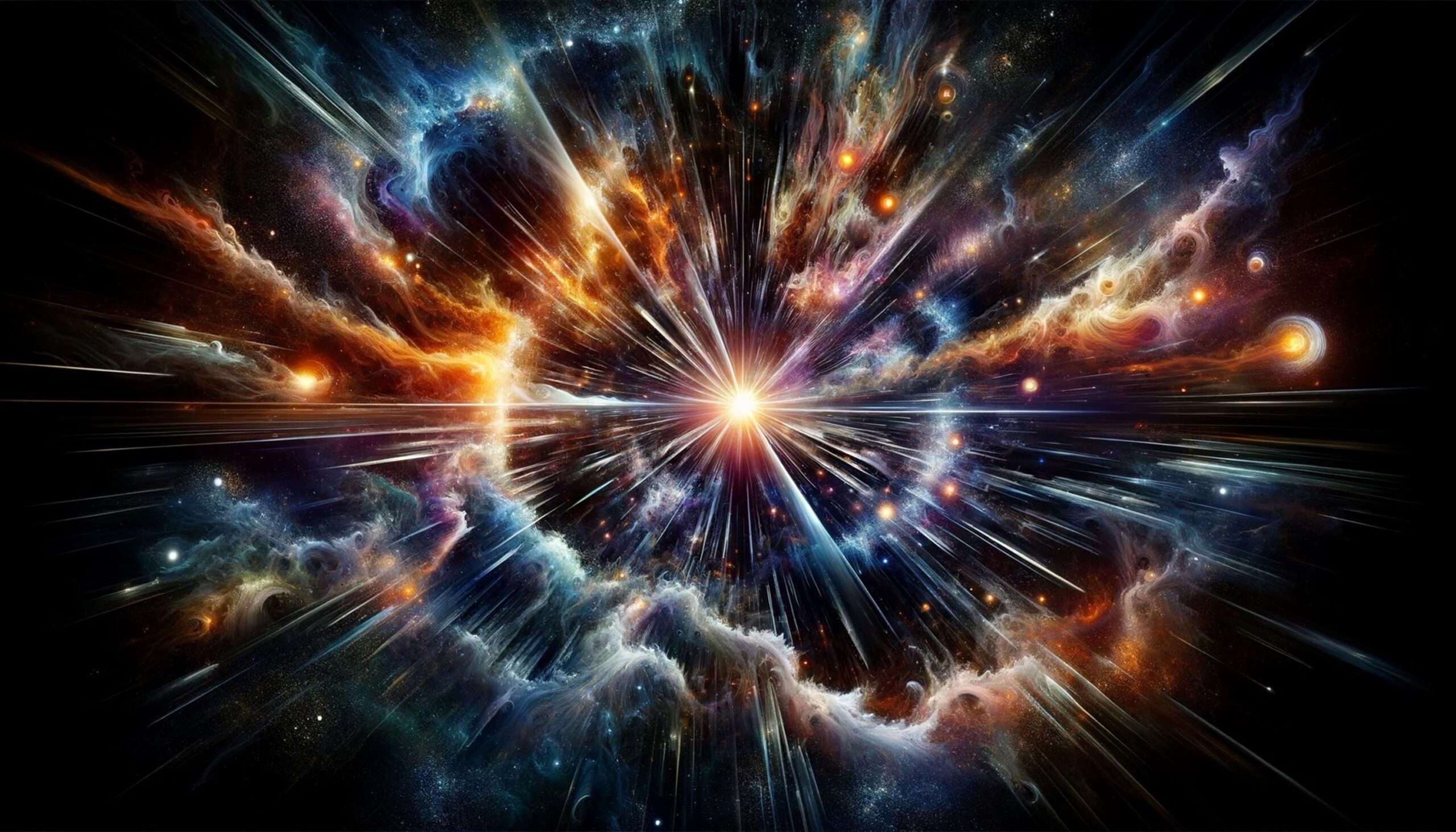Introduction
What if a theory created by one person over 100 years ago is still helping us understand the universe today, controlling how it has behaved for over 11 billion years?
In 1915, Albert Einstein introduced his theory of general relativity, which changed how we view gravity. Instead of thinking of gravity as a force, he showed that it’s the bending of space and time caused by mass and energy. This idea helped explain things like how light bends around big objects and became a key part of modern astrophysics. It has shaped our understanding of everything from black holes to the expanding universe.
Discoveries have shown that gravity, as Einstein described it, has been the same for 11 billion years. This strengthens our belief in his theory and gives us new ways to explore the universe’s deeper mysteries.
What is Einstein’s Theory of General Relativity?
Simple Explanation:
Einstein’s Theory of General Relativity explains how gravity works. Picture space and time as a stretchy fabric called spacetime. When something heavy, like a planet or star, sits on this fabric, it creates a dent or curve. Smaller objects, like other planets or light, move along these curves, and that’s what we feel as gravity. It’s similar to rolling a ball on a trampoline where a heavy object has been placed— the ball moves along the curve.
Key Predictions:
Einstein’s theory predicted some amazing things:
Gravitational Lensing: Light bends when it passes near a massive object because spacetime curves around it, like how the Sun bends the path of light from stars.
Gravitational Waves: Ripples in spacetime happen when massive objects, like black holes, collide. These waves were first detected in 2015, over 100 years after Einstein predicted them.
Time Dilation: Time moves slower in strong gravitational fields. For example, clocks on Earth run a tiny bit slower than those on a satellite in orbit.
Why It Matters:
Before Einstein, people used Newton’s theory of gravity, which saw gravity as a force acting through space. It worked for most things, but couldn’t explain certain details like Mercury’s orbit or the bending of light. Einstein’s theory solved these problems and gave us tools to study the universe in new ways. It’s also why technologies like GPS work correctly, help us understand black holes, and continue to shape how we explore space and physics today.
The Cosmic Timeline: 11 Billion Years of Gravity
The Study:
A recent groundbreaking study tested Einstein’s Theory of General Relativity by looking at gravity’s behavior over 11 billion years of cosmic history. Scientists used data from large surveys, like the Dark Energy Survey, and observations of distant supernovae—exploding stars visible across the universe. These tools helped measure how gravity affects the distribution of galaxies, bends light, and moves cosmic structures over vast distances and time.
Findings:
The results were incredible:
Gravity’s Constancy: Over 11 billion years, gravity has stayed the same, with no noticeable changes from what Einstein predicted. Whether in the early universe or today, the same rules about spacetime curvature still apply.
Einstein Verified Again: The study showed that as the universe expanded and changed, Einstein’s equations continued to be accurate, no matter the time or distance.
The Role of Dark Energy: The research also helped us understand dark energy, the mysterious force causing the universe to expand faster. By studying how gravity and the expansion of the universe work together, scientists confirmed that dark energy affects the universe’s growth but doesn’t change how gravity behaves. This strengthens our trust in Einstein’s Theory of General Relativity.
Implications for the Future
Gravitational Waves and Black Holes
This discovery boosts our ability to study some of the universe’s most extreme events, like black holes and gravitational waves. By confirming that gravity behaves the same over billions of years, scientists can trust their models for predicting black hole collisions, neutron star mergers, and the ripples in spacetime these events cause. This could help us detect even fainter or more distant gravitational waves, possibly uncovering events from the very early universe.
Cosmic Expansion
The study also strengthens our understanding of the universe’s accelerating expansion, driven by the mysterious force called dark energy. By confirming gravity’s role throughout cosmic history, scientists have a better foundation for understanding how dark energy shapes spacetime on a large scale. This could lead to better models of cosmic expansion and help us predict the universe’s future—whether it will continue to expand forever, slow down, or end in a “Big Crunch” or “Big Rip.”
Potential for New Physics
While the study supports Einstein’s theory, it also shows how much we still don’t know. Future tests of gravity, especially in extreme conditions, might reveal small differences from general relativity. Such findings could point to new physics beyond Einstein, possibly connecting gravity with quantum mechanics or helping us understand dark matter and dark energy. Each new test brings us closer to answering some of the universe’s biggest mysteries, like the existence of hidden dimensions or entirely new forces.
Conclusion
The confirmation that gravity has remained consistent over 11 billion years is a major achievement, proving that Einstein’s Theory of General Relativity holds across both time and space. This discovery not only deepens our understanding of gravity but also boosts our confidence in the models we use to explain the universe’s expansion, black holes, and the mysteries of dark energy.
More than 100 years after his groundbreaking work, Einstein’s ideas continue to shape modern science. From understanding the fabric of spacetime to exploring extreme cosmic phenomena, his contributions remind us of the power of human curiosity and the pursuit of knowledge. His work has fundamentally changed how we view and explore the universe.
As we continue to uncover the secrets of the universe, each discovery opens up more questions and deeper mysteries. Stay curious and involved in the journey of science. Every breakthrough, like this one, paves the way for even greater discoveries. The universe is full of wonders waiting to be explored, and through inquiry and exploration, we will keep expanding the limits of our understanding.
Share the knowledge with

